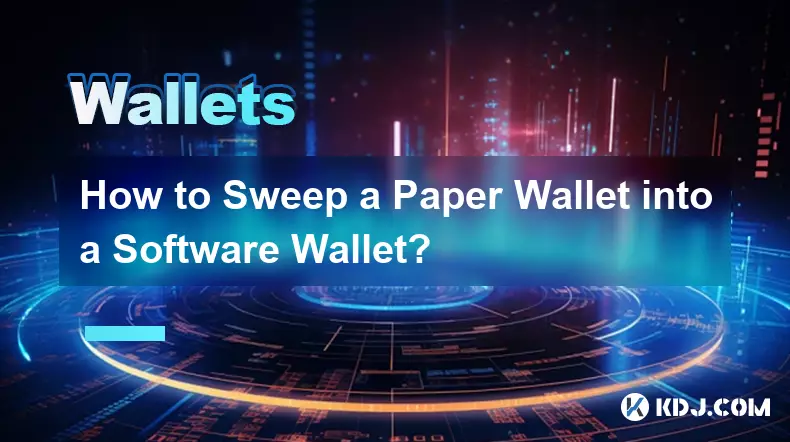-
 bitcoin
bitcoin $99296.318777 USD
-2.82% -
 ethereum
ethereum $3203.465899 USD
-6.84% -
 tether
tether $0.999590 USD
-0.03% -
 xrp
xrp $2.308913 USD
-4.00% -
 bnb
bnb $922.788929 USD
-3.53% -
 solana
solana $144.020807 USD
-5.89% -
 usd-coin
usd-coin $0.999798 USD
0.00% -
 tron
tron $0.291590 USD
-1.12% -
 dogecoin
dogecoin $0.163780 USD
-4.46% -
 cardano
cardano $0.526919 USD
-4.40% -
 hyperliquid
hyperliquid $37.888865 USD
-2.24% -
 bitcoin-cash
bitcoin-cash $510.515457 USD
-1.08% -
 chainlink
chainlink $14.436987 USD
-5.63% -
 stellar
stellar $0.267345 USD
-4.77% -
 unus-sed-leo
unus-sed-leo $9.175222 USD
0.53%
How do I update the firmware of my Ledger Nano S/X?
Updating your Ledger Nano S/X firmware via the official Ledger Live app is crucial for security and new features; back up your seed phrase beforehand, verify the update source's authenticity, and use a trusted USB cable.
Mar 17, 2025 at 07:25 pm

- Ledger device firmware updates are crucial for security and adding new features.
- The update process is straightforward but requires careful attention to detail.
- Always verify the authenticity of the update source to avoid malicious software.
- Back up your seed phrase before starting any firmware update.
- Understand the risks involved before proceeding with a firmware update.
Updating your Ledger Nano S or X's firmware is essential for maintaining the security and functionality of your cryptocurrency hardware wallet. Outdated firmware can leave your device vulnerable to exploits, while updates often introduce new features and improved performance. The process is relatively simple, but requires careful attention to detail to prevent errors.
First, ensure your Ledger device is charged sufficiently. A low battery during the update could interrupt the process, potentially bricking your device. Connect your Ledger to your computer using a USB cable that you trust and have not used for anything else suspicious. Avoid public computers or USB ports.
Next, open the Ledger Live application. This is the official software provided by Ledger and is the only recommended method for updating your device's firmware. Make sure you're using the latest version of Ledger Live itself; updating the software is a good practice before attempting a firmware update.
Once Ledger Live is open and your device is connected, it should automatically detect your Ledger Nano S or X. If it doesn't, try restarting both your computer and your Ledger device. Check your USB connection to ensure it's secure and working. If problems persist, consult Ledger's support documentation.
If your Ledger is recognized, Ledger Live will indicate whether a firmware update is available. If so, you'll see a prompt to initiate the update. Click the appropriate button.
Before proceeding, Ledger Live will strongly advise you to back up your seed phrase. This is crucial. Your seed phrase is the key to accessing your cryptocurrencies. If you lose it, you lose access to your funds. Write down your seed phrase carefully, keeping it safe and secure, away from any digital devices. Consider using a metal plate for added security.
The firmware update process itself is relatively quick. Follow the on-screen instructions carefully, which may involve confirming actions on both your computer and your Ledger device. Do not disconnect your device during the update process. Doing so could render your device unusable.
Once the update is complete, your Ledger device will automatically reboot. You should then be able to verify the new firmware version within Ledger Live. If you encounter any problems during the update process, consult Ledger's official support website or contact their customer service. Never seek help from unofficial sources.
Security Considerations:It is paramount to download Ledger Live only from the official Ledger website. Downloading from unofficial sources could expose you to malicious software that could compromise your device and your cryptocurrencies. Always verify the authenticity of the downloaded file using Ledger's official website's checksum or digital signature.
Always use a trusted USB cable. Compromised cables could allow attackers to intercept data during the update process. Consider using a new, unused cable for this purpose. Never use a public computer for this update.
Ensure you have a secure internet connection. A compromised network could be used to intercept data during the update process. Use a VPN if you're concerned about your network's security.
Troubleshooting:If you encounter an error during the update, such as a connection issue or a failure to verify the firmware, try the following:
- Restart your computer and your Ledger device.
- Check your USB cable and ensure it's securely connected.
- Verify your internet connection.
- Re-download Ledger Live from the official website.
- Consult Ledger's official support documentation for specific troubleshooting steps.
A: Interrupting the firmware update can potentially brick your Ledger device, rendering it unusable. Always ensure you have a stable power supply and a reliable internet connection before starting the update.
Q: How often should I update my Ledger Nano S/X firmware?A: It's recommended to update your firmware whenever a new version is released. Ledger regularly releases updates to improve security and add new features. Check for updates regularly through Ledger Live.
Q: Is it safe to update my Ledger firmware?A: Yes, updating your firmware is generally safe when done through the official Ledger Live application and following the provided instructions. However, always back up your seed phrase before updating.
Q: My Ledger device isn't recognized by Ledger Live. What should I do?A: Try restarting both your computer and your Ledger device. Ensure your USB cable is securely connected. Check your computer's device manager to make sure the Ledger is properly detected. If the problem persists, consult Ledger's support documentation.
Q: Can I update my Ledger firmware using a third-party application?A: No. Only use the official Ledger Live application to update your Ledger Nano S or X firmware. Using third-party applications could expose your device to malware and compromise your security.
Disclaimer:info@kdj.com
The information provided is not trading advice. kdj.com does not assume any responsibility for any investments made based on the information provided in this article. Cryptocurrencies are highly volatile and it is highly recommended that you invest with caution after thorough research!
If you believe that the content used on this website infringes your copyright, please contact us immediately (info@kdj.com) and we will delete it promptly.
- Crypto Carnage: Navigating Selling and Liquidations in a Wild Market
- 2025-11-14 16:50:01
- Mohammed Siraj's First Spell Woes: An India Teammate's Critique
- 2025-11-14 14:40:02
- BTC, ETH, and Altcoin Picks: Navigating the Crypto Landscape
- 2025-11-14 14:50:01
- Coin Toss Tales: Temba Bavuma's Wager and India vs. SA Showdown
- 2025-11-14 12:50:01
- Shubman Gill, WTC Final, and the Coin Toss: A New Yorker's Take
- 2025-11-14 15:05:01
- Aerodrome Takes Flight: Unifying Ethereum DeFi Liquidity Across Chains
- 2025-11-14 15:10:02
Related knowledge

How to Use a Testnet Wallet for Development and Testing?
Nov 14,2025 at 06:20pm
Understanding Testnet Wallets in Blockchain Development1. A testnet wallet functions similarly to a mainnet wallet but operates on a blockchain networ...

How to Create a Watch-Only Wallet for Monitoring Funds?
Nov 15,2025 at 02:39am
Understanding Watch-Only Wallets in the Crypto Ecosystem1. A watch-only wallet is a type of cryptocurrency wallet that allows users to monitor blockch...

How to Sweep a Paper Wallet into a Software Wallet?
Nov 14,2025 at 10:59pm
Understanding Paper Wallets and Software Wallets1. A paper wallet is a physical document that contains a cryptocurrency public address and a private k...

The Ultimate Guide to Choosing the Right Crypto Wallet.
Nov 14,2025 at 01:20pm
Understanding the Types of Crypto Wallets1. Hot wallets are digital wallets connected to the internet, making them convenient for frequent transaction...

How to Set Up and Use a Solana Phantom Wallet?
Nov 14,2025 at 09:19am
Creating Your Solana Phantom Wallet1. Navigate to the official Phantom wallet website using a secure browser. Download the extension compatible with y...

How to Recover a Wallet Using Your Seed Phrase?
Nov 15,2025 at 03:39am
Understanding Seed Phrases and Wallet Recovery1. A seed phrase, often composed of 12 or 24 words, acts as the master key to access a cryptocurrency wa...

How to Use a Testnet Wallet for Development and Testing?
Nov 14,2025 at 06:20pm
Understanding Testnet Wallets in Blockchain Development1. A testnet wallet functions similarly to a mainnet wallet but operates on a blockchain networ...

How to Create a Watch-Only Wallet for Monitoring Funds?
Nov 15,2025 at 02:39am
Understanding Watch-Only Wallets in the Crypto Ecosystem1. A watch-only wallet is a type of cryptocurrency wallet that allows users to monitor blockch...

How to Sweep a Paper Wallet into a Software Wallet?
Nov 14,2025 at 10:59pm
Understanding Paper Wallets and Software Wallets1. A paper wallet is a physical document that contains a cryptocurrency public address and a private k...

The Ultimate Guide to Choosing the Right Crypto Wallet.
Nov 14,2025 at 01:20pm
Understanding the Types of Crypto Wallets1. Hot wallets are digital wallets connected to the internet, making them convenient for frequent transaction...

How to Set Up and Use a Solana Phantom Wallet?
Nov 14,2025 at 09:19am
Creating Your Solana Phantom Wallet1. Navigate to the official Phantom wallet website using a secure browser. Download the extension compatible with y...

How to Recover a Wallet Using Your Seed Phrase?
Nov 15,2025 at 03:39am
Understanding Seed Phrases and Wallet Recovery1. A seed phrase, often composed of 12 or 24 words, acts as the master key to access a cryptocurrency wa...
See all articles










































































